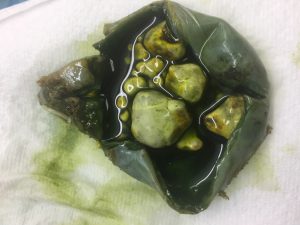This was tricky for me to write as the subject is the closest to my heart! I really found it hard to leave so much out.
Acute hepatitis:
- Viruses
- Drugs
Chronic hepatitis (liver disease lasting more than 6 months)
- Viruses
- Autoimmune
- Drugs
Pathological features of chronic hepatitis
Grade = inflammation (can be in 3 places: portal tracts, interface and lobular)
Stage = fibrosis (portal tract expansion > bridging > cirrhosis)
The commonest causes of cirrhosis are:
- viral hepatitis
- alcoholic liver disease
- non-alcoholic fatty liver disease
Viral hepatitis
There are 5 hepatitis viruses (all RNA except for HBV): A-E
A and E: spread by faecal oral route, cause only an acute hepatitis
B, C and D (which can only infect people who have HBV, as well): spread by blood etc., cause the full range of liver disease:
- acute hepatitis
- chronic hepatitis – scarring begins
- cirrhosis – nodules of hepatocytes surrounded by scar tissue
Alcoholic liver disease and non-alcoholic fatty disease (risk factors: obesity, diabetes) produce the same pathological changes:
- fatty change
- fatty liver hepatitis (alcoholic hepatitis / non-alcoholic steatohepatitis (NASH) respectively): ballooning, neutrophils and scarring
- cirrhosis
NB These 3 stages often con-exist
There are (many) other liver diseases which may cause of cirrhosis:
- Autoimmune hepatitis: anti smooth muscle actin autoantibodies, plasma cells, associated with other AI diseases, response to steroids
- Drug induced liver injury (DILI): “any kind of liver disease can be caused by a drug’
- Haemochromatosis = genetic (AR) increased iron absorption from the gut
deposited in the liver and many other organs (including the pancreas).
- Wilson’s disease = genetic (AR) decreased copper excretion (by hepatocytes into the bile duct).
- Primary sclerosing cholangitis (PSC): sclerosis (= fibrosis) of the bile ducts leading to their loss. Associated with Ulcerative Colitis
- Primary biliary cholangitis (PBC): inflammation (with granulomas) of the bile ducts leading to their loss
Complications of cirrhosis:
- Portal hypertension with varices
- Liver failure with hepatic encephalopathy,
- Liver cell cancer (the same as hepatocellular carcinoma)
Tumours of the liver:
The commonest are secondary tumours (many via the portal vein)
Primary tumours
- Benign
- Bile duct adenomas
- Hepatic adenomas (associated with the contraceptive pill)
- Malignant
- Liver cell carcinoma
Most commonly associated with cirrhosis.
Spread via the portal vein.
Carry a poor prognosis.
- Cholangiocarcinoma (an adenocarcinoma)
Divided into intrahepatic and extra hepatic (including gall bladder)
May be associated with ulcerative colitis and worm infections
Spread to lymph nodes
Carry a poor prognosis
